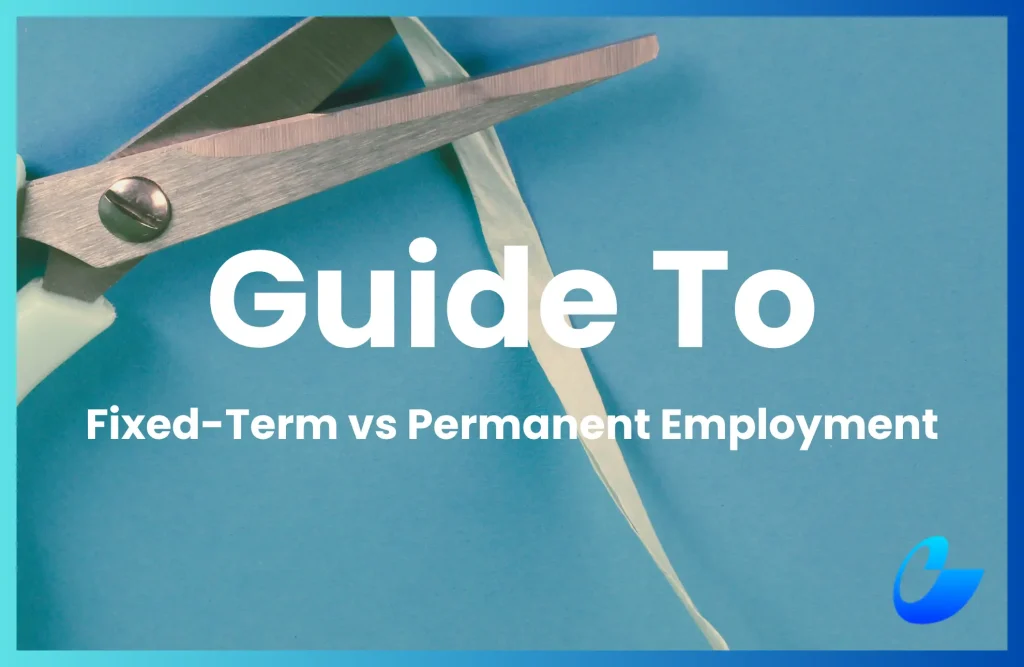While hiring on a fixed-term basis can be attractive to employers due to perceived flexibility, Malaysian courts prioritise substance over form and calling an employment contract ‘fixed-term’ doesn’t automatically make it one.
Depending on facts, a court may treat an employee as permanent even if it says otherwise on paper!
As this distinction can have significant implications during unfair dismissal disputes, our guide covers what employers in Malaysia should consider when managing fixed-term and permanent employment arrangements.
Fixed-term vs permanent employment
The table below shows key features of an employment arrangement that places it under either permanent of fixed-term.
| Permanent Employment | Fixed-Term Employment | |
|---|---|---|
| Duration | Ongoing, with no specified end date | Has a defined start and end date |
| Purpose | For long-term or core roles in your business | For temporary projects, seasonal needs, or specific tasks |
| Termination | Can only be ended for “just cause and excuse” (e.g. redundancy or poor performance) if terminated by the company, or by voluntary resignation | Ends automatically upon contract expiry if fixed term is genuine |
| Risk | Harder to terminate; must have a valid reason | If misused (e.g., continuous renewals), court may treat employee as permanent in substance |
| Benefits | Entitled to full statutory and company benefits | Entitled to statutory benefits under the Employment Act; company benefits often prorated or limited |
Some employers choose fixed-term contracts thinking they can just let the contract expire if they no longer want the employee, giving them an easy way out.
However, in examining an employment contract, Malaysian courts often look at the:
- intention of the parties
- employer’s subsequent conduct during employment, and
- nature of the employer’s business and the work performed
And if they find the arrangement is effectively permanent in substance, they may treat it as such even if the document says otherwise.
Signs of a permanent arrangement
Rather than relying on the contract label alone, the court considers the full picture of the employment relationship, and some of the most common indicative signs the court looks for include:
- the employee’s contract is renewed repeatedly without a real break in service
- there is a company practice or understanding that contracts are renewed automatically without the employee having to reapply
- the employee receives bonuses, increments, or promotions similar to permanent staff
- the work is part of the company’s regular business and not a temporary or project-based role
- the employer’s motivation appears to be to void granting permanent benefits or job security
In fact, the Industrial Court has seen cases where an employee’s contract was renewed continuously for over 10 years on back-to-back fixed-term contracts!
When this happens, the court may view the arrangement as continuous employment and the employee is effectively permanent in substance, though it must be stressed each case depends on its full facts and the intention of parties.
When several of these factors are present, the court will often find that the employment was permanent in substance, even if the document is labelled as a “fixed-term” contract.
However, the courts have also made it clear that the presence of a single factor alone, such as an automatic renewal or a probationary clause within a fixed-term contract, does not automatically convert the relationship into permanent employment.
When a fixed-term contract is used properly
If a fixed-term arrangement is genuine, the law recognises that there is no dismissal when the contract simply expires; the employment ends automatically, and no unfair dismissal claim arises.
Even if an employee under a genuine fixed-term contract resigns due to the employer’s conduct (for example, constructive dismissal), the Industrial Court has held that the compensation will be limited to the unexpired portion of the contract only.
The risk of misusing fixed term contracts
If the Industrial Court believes a fixed-term contract was used to avoid employer obligations for permanent staff, it may decide that an employee was a permanent employee. Once that happens, and if the non-renewal is deemed an unfair dismissal, the employer could face serious financial consequences:
- reinstatement orders, requiring the company to take the employee back, or
- compensation and back wages of up to 24 months’ salary
That’s why the best starting point is to look at why you are hiring and match the contract type to the real purpose of the role.
Choosing between the two
Here’s a quick comparison to help you decide which fits your business needs better.
| Fixed-Term Employment | Permanent Employment | |
|---|---|---|
| When It Makes Sense | When there’s a clear business reason and defined timeframe. | When the role is part of your ongoing operations or core business. |
| Common Examples |
|
|
| Key Contract Points |
|
|
| Main Advantages |
|
|
| Key Risks |
|
|
Fixed-term does not mean infinite flexibility
Ultimately, fixed-term contracts offer flexibility and permanent roles provide stability, both are valuable, but only when used for the right reasons. In deciding whether to hire under a fixed-term or permanent contract, ask:
- Is this role temporary or ongoing?
- Is there a specific project, time limit, or seasonal need for the job?
- Would it appear that I’m avoiding giving permanent status?
If in doubt, take the time to structure and review contracts early. It’s far easier, and far less costly, to get them right from the start than to fix them after a dispute. If you are considering fixed-term hiring, we can help you prepare or review your employment contracts to ensure they are practical, compliant, and aligned with your business needs.










